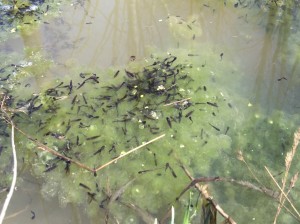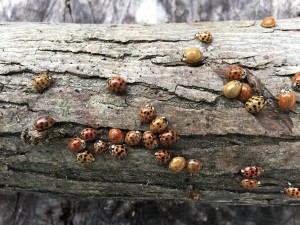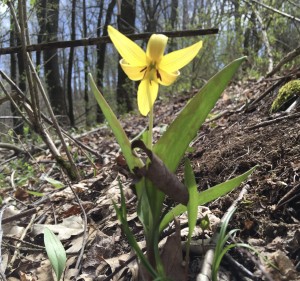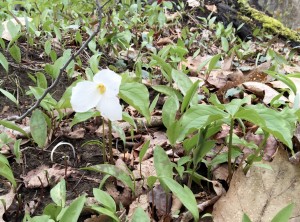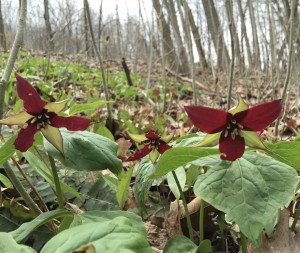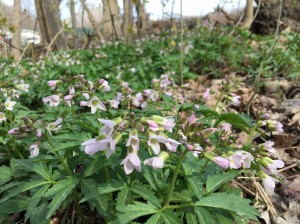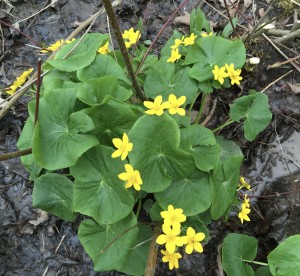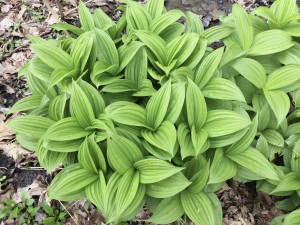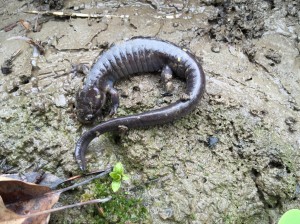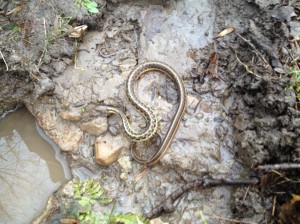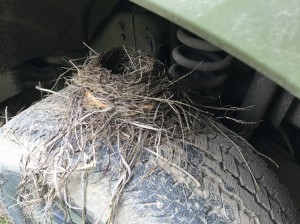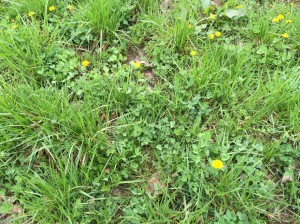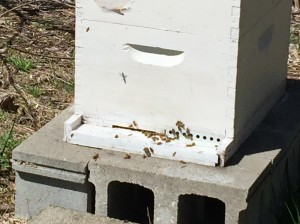We took a trip to southwestern western New York state during the last weeks of April and first few days of May. This year this was a cool period of time with Spring unfolding very slowly. We like this time of year because it is a time of re-birth for both plants and animals. Trees start to grow new leaves, animals like foxes are searching for food for their newborn kits, birds are arriving after overwintering further south.
On our initial walk we observed at a small pond, polliwogs hatching from eggs near the waters edge. We were surprised they were already hatching since it must have been quite cold when the egg masses were laid. The egg masses could be from frogs, toads, or the eastern newt. We took some of the eggs and placed them in a large jar in the kitchen to watch some of them hatch.
On our porch in the stacked firewood, each year ladybugs find a way inside to overwinter in the protection of the porch and the stacked wood. When the warmth of the sun awakens them in the spring they seem to have entered a maze and cannot find their way out. Notice all the differences in color and spot configuration.
When we walk into the woods, we find several spring flowers, that have emerged from the cold soil and are now blooming. Sometimes these plants will grow right through the layer of dead tree leaves that fell last Autumn.
We have both the white trilliums and red trilliums growing in our woods. The flowers are scattered randomly throughout the woods. There is one place where there is a large group of white trilliums which is quite spectacular, if you can be there during the very short period of time when they bloom.
In our woods, only about one out of 10 trilliums is a red trillium.
The Slender Tooth Wort is a much smaller flower but is also beautiful if you can get down on your hands and knees and take a closer look!
In wet areas grow different flowers. One is the Marsh Marigold.
Another is the False Hellebore. Although the False Hellebore has not yet bloomed, the leaves and foliage are quite beautiful as they begin to grow in the early spring. This plant is very poisonous if eaten!
Salamanders and snakes overwinter under rocks, logs and in this case, a discarded automobile tire. As the soil temperatures rise, they will become more active. Snakes and amphibians are cold blooded and move slowly when it is cold.
A few years ago, also in April, we lifted a rock where a spring was coming out of a hillside. When we did, we encountered a Garter Snake (genus Thamnophis) and a Red-Backed Salamander (Plethodon cinereous).
We often wondered how long it takes a Robin to build it’s nest. We noticed a robin starting to build a nest very early in the morning on our truck tire. By 7:00 that night the robin had finished and was sitting in the nest. That seemed pretty quick to us!
The hay fields that are used to feed local dairy cows are also beginning to green up. The grasses have grown several inches tall, the clover is leafing out and dandelions are just starting to flower. The dandelions are a good source of early season pollen to feed honeybee larvae which are developing in our honeybee hive.
The entrance to the honeybee hive is reduced in the fall to keep out cold winds and uninvited mice!
Early Spring is a great time to put on your jacket, and go exploring to see what you can see. You may be amazed!!


